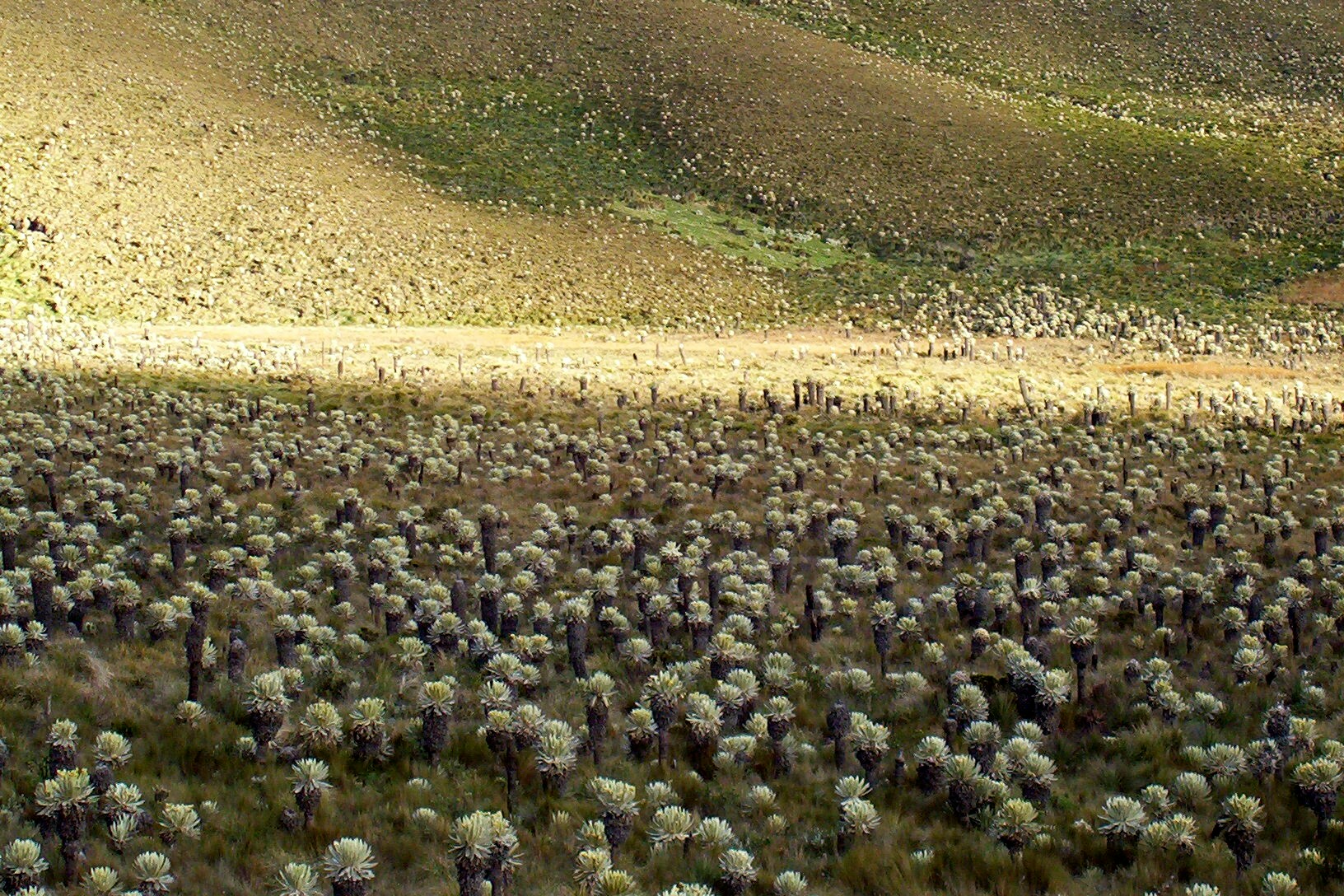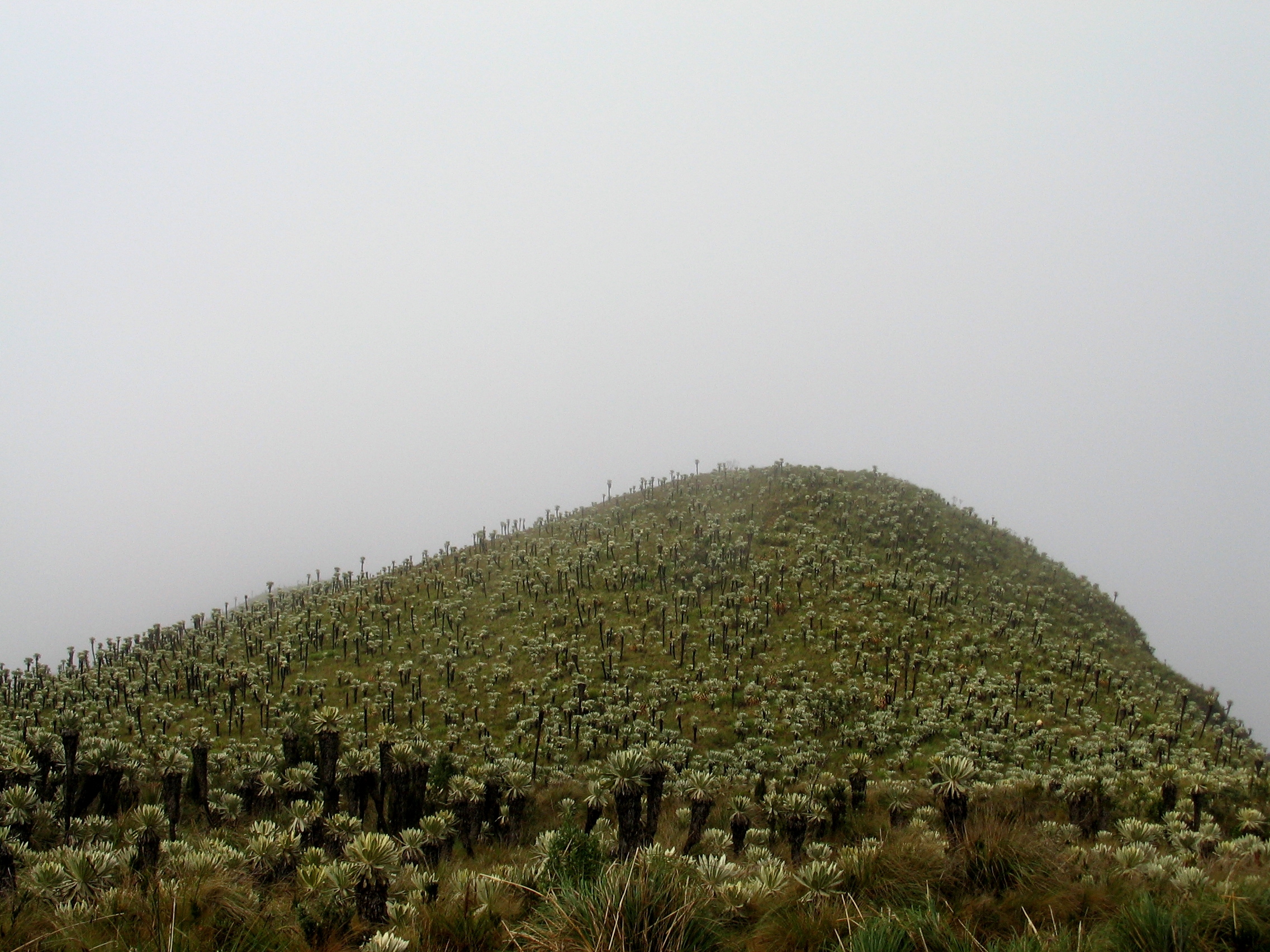Frailejones on:
[Wikipedia]
[Google]
[Amazon]
''Espeletia'', commonly known as 'frailejones' ("big monks"), is a 



Biogeography shaped the metabolome of the genus ''Espeletia'': a phytochemical perspective on an Andean adaptive radiation
''Scientific Reports'': volume 7, Article number: 8835
pdf
genus
Genus (; : genera ) is a taxonomic rank above species and below family (taxonomy), family as used in the biological classification of extant taxon, living and fossil organisms as well as Virus classification#ICTV classification, viruses. In bino ...
of perennial subshrubs, in the family Asteraceae
Asteraceae () is a large family (biology), family of flowering plants that consists of over 32,000 known species in over 1,900 genera within the Order (biology), order Asterales. The number of species in Asteraceae is rivaled only by the Orchi ...
. The genus, which is native mainly to Colombia
Colombia, officially the Republic of Colombia, is a country primarily located in South America with Insular region of Colombia, insular regions in North America. The Colombian mainland is bordered by the Caribbean Sea to the north, Venezuel ...
, Venezuela
Venezuela, officially the Bolivarian Republic of Venezuela, is a country on the northern coast of South America, consisting of a continental landmass and many Federal Dependencies of Venezuela, islands and islets in the Caribbean Sea. It com ...
and Ecuador
Ecuador, officially the Republic of Ecuador, is a country in northwestern South America, bordered by Colombia on the north, Peru on the east and south, and the Pacific Ocean on the west. It also includes the Galápagos Province which contain ...
, was first formally described in 1808. The genus was named after the viceroy of New Granada, José Manuel de Ezpeleta.
The plants live at high altitude in páramo
Páramo () may refer to a variety of alpine tundra ecosystems located in the Andes Mountain Range, South America. Some ecologists describe the páramo broadly as "all high, tropical, montane vegetation above the continuous timberline". A narrower ...
ecosystems. The trunk is thick, with succulent
In botany, succulent plants, also known as succulents, are plants with parts that are thickened, fleshy, and engorged, usually to retain water in arid climates or soil conditions. The word ''succulent'' comes from the Latin word ''sucus'', meani ...
hairy leaves disposed in a dense spiral pattern. Marcescent
Marcescence is the withering and persistence of plant organs that normally are shed, and is a term most commonly applied to plant leaves. The underlying physiological mechanism is that trees transfer water and sap from the roots to the leaves ...
leaves help protect the plants from cold. The flowers are usually yellow, similar to daisies. Some members of the genus exhibit a caulirosulate growth habit.
The frailejón plant is endangered due to destruction of the páramo for agricultural purposes, especially potato
The potato () is a starchy tuberous vegetable native to the Americas that is consumed as a staple food in many parts of the world. Potatoes are underground stem tubers of the plant ''Solanum tuberosum'', a perennial in the nightshade famil ...
crops. This activity continues, despite the Colombian government declaring it illegal. Since about 2010 the plants have also come under attack by beetle larvae, a moth and a fungus, some new to science but suspected to be related to climate change
Present-day climate change includes both global warming—the ongoing increase in Global surface temperature, global average temperature—and its wider effects on Earth's climate system. Climate variability and change, Climate change in ...
which allows lower-altitude species to flourish.
''Espeletia'' is well known for contributing to the world in water sustainability by capturing water vapor from passing clouds in its spongy trunk and releasing it through the roots into the soil, thus helping to create vast high-altitude subterranean water deposits and lakes that will eventually form rivers.



Species
Species accepted byPlants of the World Online
Plants of the World Online (POWO) is an online taxonomic database published by the Royal Botanic Gardens, Kew.
History
Following the Convention on Biological Diversity, the Royal Botanic Gardens in Kew launched Plants of the World Online i ...
as of December 2022:
References
Further reading
*Padilla-González, G.F., Diazgranados, M., Da Costa, F.B.(2017Biogeography shaped the metabolome of the genus ''Espeletia'': a phytochemical perspective on an Andean adaptive radiation
''Scientific Reports'': volume 7, Article number: 8835
External links
{{Authority control Asteraceae genera Millerieae Flora of Southern America Páramo flora Taxa named by Aimé Bonpland Taxa named by Alexander von Humboldt